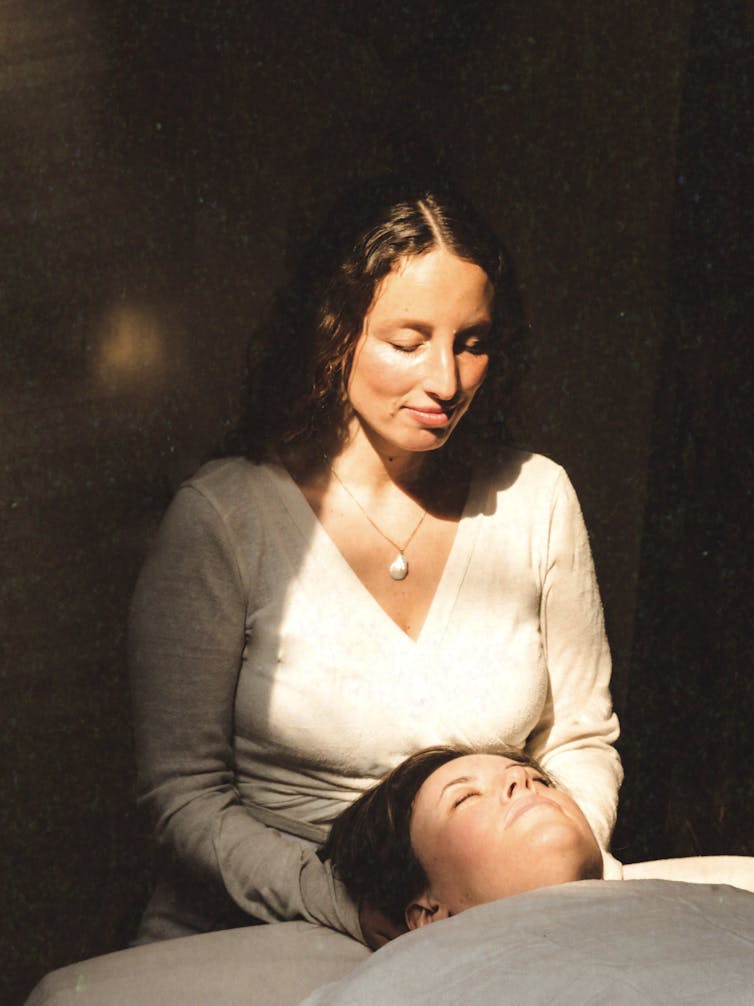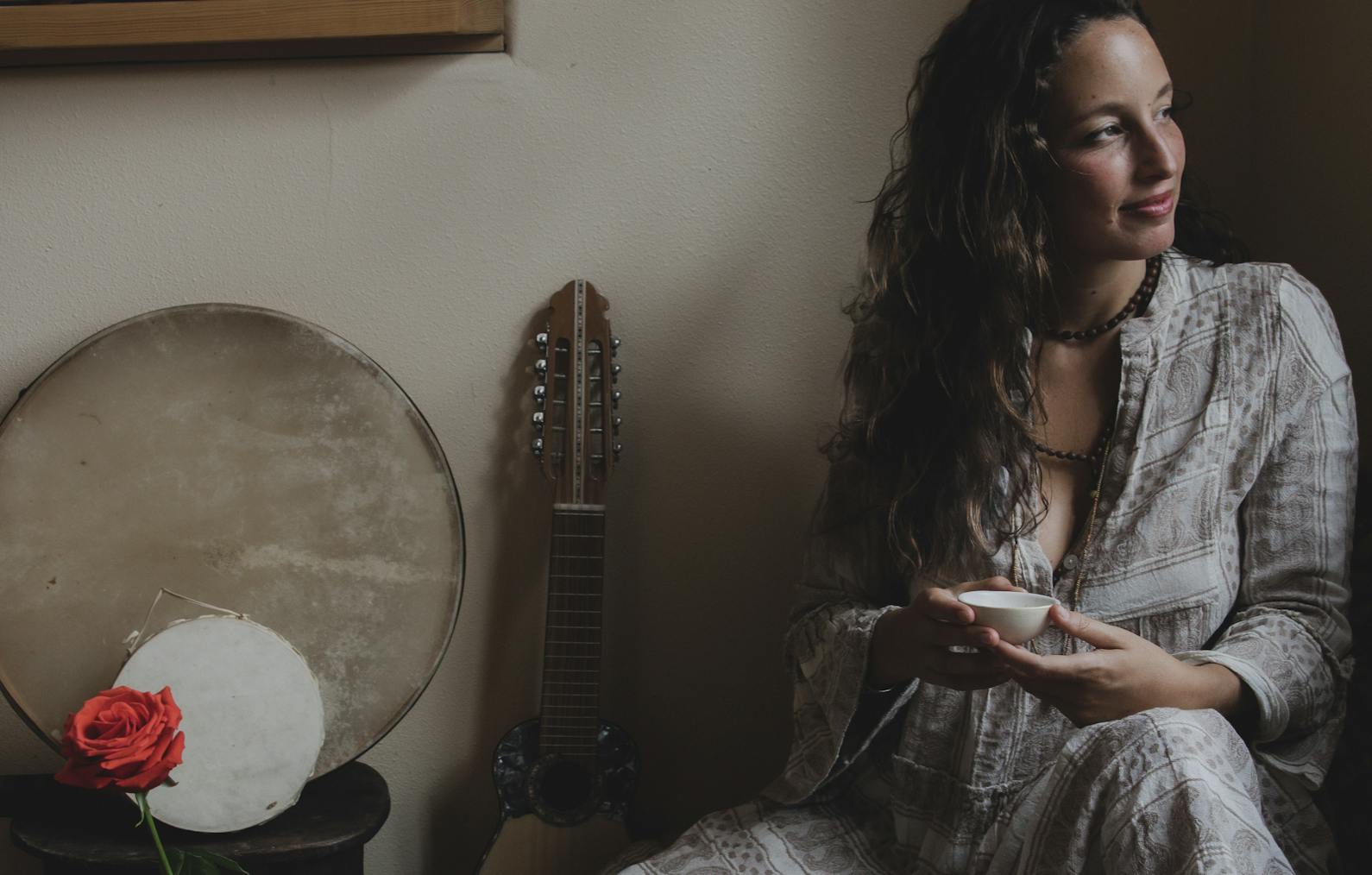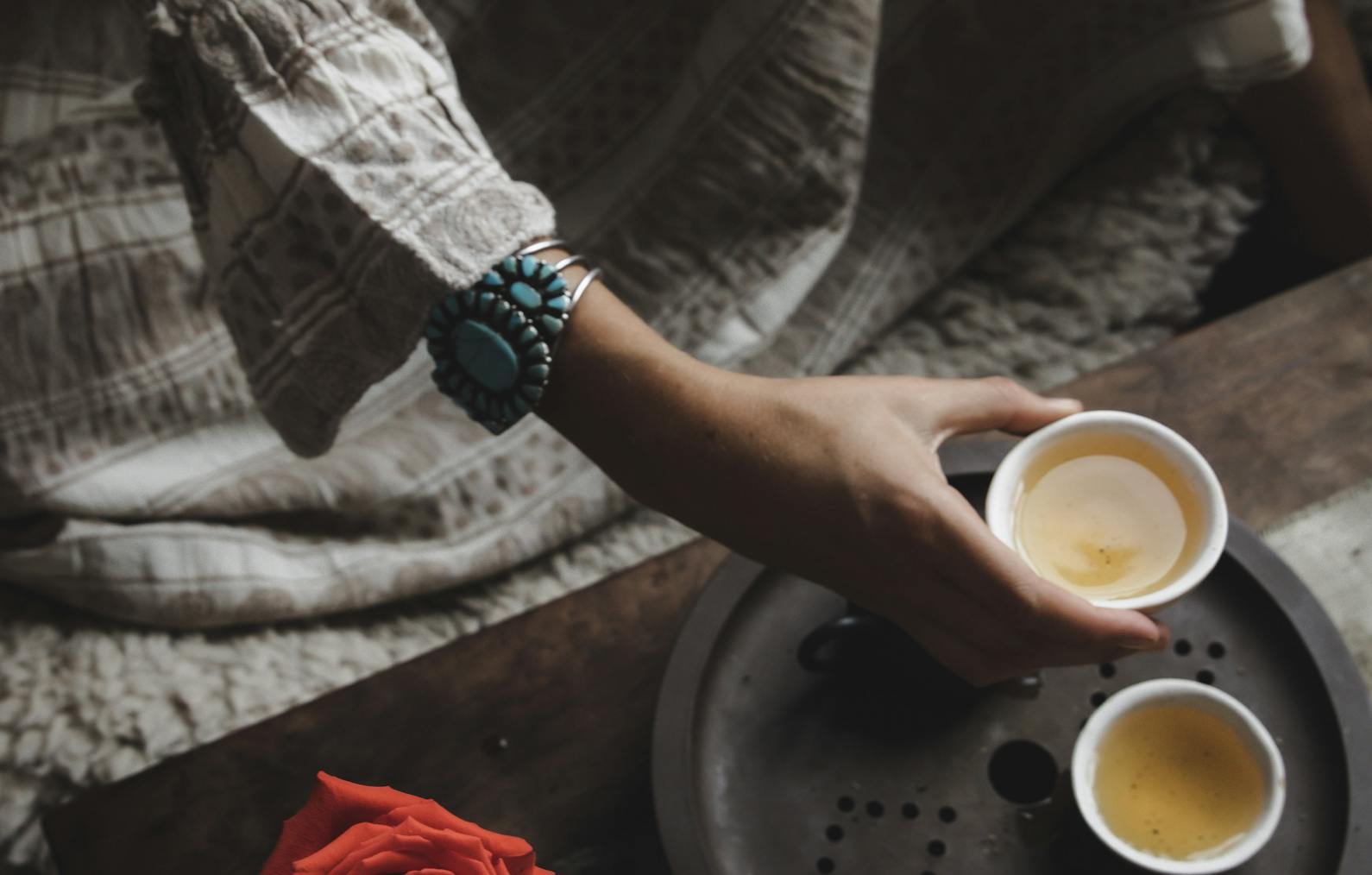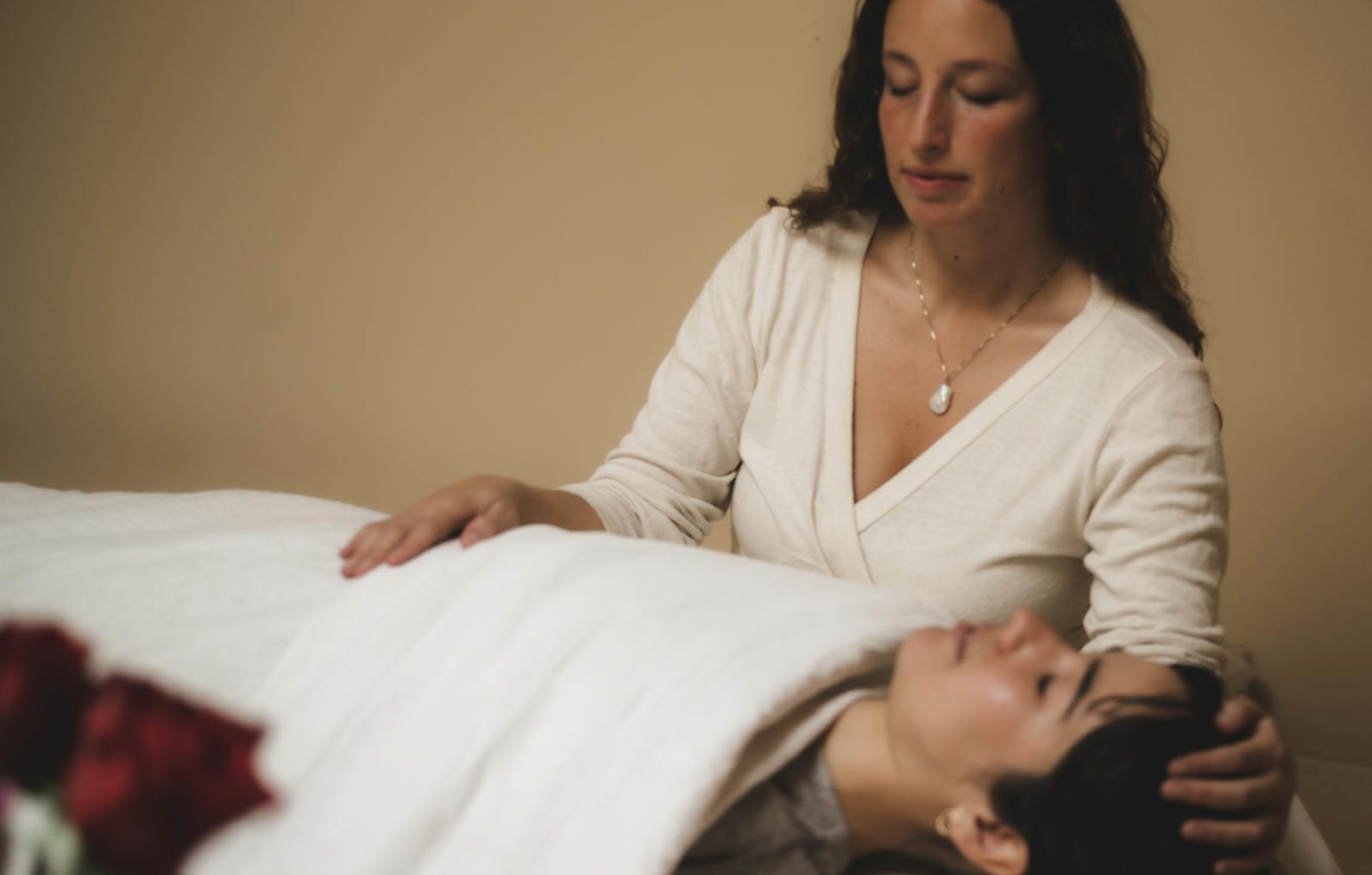Bodywork
New Mexico

“I hold places on the body that allow the system to rest, and healing happens naturally. Craniosacral assists the nervous system in reclaiming the health that is never lost.”

How would you describe Craniosacral work?
It is getting more well known, but 14 years ago when I started, so few people that I knew had heard about it. It is a modality that originates in osteopathy, the study of bones. What people often don’t realize when we talk about bones is that we have a fluid body, and the bones are being held in, immersed by and filled with that fluid. Craniosacral work is listening to the bones as well as the fluids, and how all is subtly yet dynamically constantly moving in different degrees and tones of inertia and flow, in relation to the whole. It is a practice of sensing the rhythms and rates (or tides) at which the person is being breathed by the Breath of Life. The Breath of Life is an intelligence that moves and directs the potency and the health throughout our entire body. Craniosacral work is also a deep study into embryology and recognizing how we are formed in the ocean of our mother and informed by the intelligence of the Breath of Life. It is amazing to make conscious contact with this Breath, which was with us in our journey as an embryo before the pulse of our beating heart, before the inhale and exhale of our lungs, and is still with us, governing our health in this moment.
What type of Craniosacral do you practice?
I have trained extensively in Craniosacral Biodynamics with four master teachers, so this is my main focus in my private practice and in the group trainings that I teach. The biodynamic paradigm is based on the belief that the practitioner is oriented towards health and wholeness, rather than disease and illness. It operates on the fact that if and when we are able to listen to the innate intelligence of the body as the primary guidance for health, it will then show us how it will heal itself. Craniosacral Biodynamics is a meditative and spiritual practice that emphasizes the power of stillness, listening, and embodied presence. We reorient our mind from trying to figure out what’s wrong or trying to fix someone’s problem, instead we orient ourselves to finding and resting in health. Dr. A.T. Still, the founder of Osteopathy said, “to find Health should be the object of the physician. Anyone can find disease.”
What does this practice look like?
It is a multidimensional, highly sensitive, subtly attuned awareness. I see it as a skillful non-doing, more of a receiving and meeting whatever arises in the field with unwavering presence. It is resting in my center and my wholeness, while also being fully embodied and present to the feeling sensations that is information moving through me. It is an alternative paradigm to the diagnostic and mechanical world of western medicine. Craniosacral work on one hand very much aligns with western medicine, and on the other hand it shares roots with indigenous practices that emphasize connection with nature, deep listening, and respect for the power of the subtle realms.

Who is Craniosacral for?
Craniosacral is all encompassing which is why I love it! One may have an idea of what they want help with in a session, but then something completely different often arises that they didn’t realize was connected. We never know what will emerge in a session – that’s part of working with, and trusting in an intelligence that is greater than our mind. Craniosacral can help heal trauma of all forms, and it takes a skilled practitioner to hold that safely. Developing a sense of safety in the relational field is the most important thing. I spend a lot of time emphasizing this to my students. We will undoubtedly come into contact with discomfort, especially when dealing with trauma, and we will need to learn how to welcome these parts back into the whole with our love and our presence. This is the medicine of integration. It is so important.
What does a session look like?
Clients are fully clothed on the table and I make gentle contacts on different parts of the body and listen. I hold places on the body that allow the system to rest, and healing happens naturally. Craniosacral assists the nervous system in reclaiming the health that is never lost. We need the parasympathetic system to come on board so we can integrate, rest and digest (not just food but life experience) and transmute stuck, compartmentalized energy back into coherence. For example, trauma in the body can manifest as crystallized fascia. Through this work you can literally rehydrate the inner fluids and the fascia, breaking down the crystals and clearing trauma on the physical, energetic and emotional levels.
What led you to this work?
My own healing crisis - actually a few of them. I have had two major concussions resulting in TBI’s (traumatic brain injuries), the first being an accident when I was 16 in which I nearly paralyzed myself and experienced chronic pain for 8 years. A friend suggested I try craniosacral and after the first session I could already feel a dramatic shift. All the other doctors I was seeing wanted to fix part of my body, but I had so much input, as well as trauma in my nervous system that I couldn’t absorb or integrate any of the healing. With craniosacral I felt truly held in a gentle way, and my nervous system was able to simply *be*. It was finally able to catch up with itself, and all the different parts of my body started talking to each other again, coming back into a felt-sense of coherence. My second concussion happened four years ago and was a near-death experience that only made me dive deeper into this work and my path. Now I see that these injuries actually led me to finding the tools I needed for the particular sensitivities and gifts I have had since a young age.

How has it changed you?
I would say it has changed me completely, and also not at all as it only brought me back to myself and the truth of who I am. That is why I do what I do, to help others reclaim and remember who they are, and remember the health and wholeness that is always here. As a sensitive person, this feels like the most important work I can offer to those who may have had a difficult path like me.
How did you start teaching?
Teaching is not something I ever thought of doing, but one of my teachers told me to quit hiding out in classes and start teaching! He gave me the permission and task to develop my own curriculum on Craniosacral Biodynamics. I contemplated how I would have liked to be taught, if I was starting out again for the first time. I created the Breath of Life Course, a series of 4-day immersive trainings that synthesize my 14 years of study under four master teachers, as well as the lessons I learned from healing my own two major concussions. I have just begun my second year of teaching, which will bring the Breath of Life Course to many different communities all around the globe. I am humbled and grateful for the unfolding of this path.
How can people work with you?
I offer in person sessions in Santa Fe, New Mexico, and in Point Reyes, California. I also travel world-wide to teach. I love to stay for one-month residencies so that I can work with people in specific locations. I prefer to work with clients for three consecutive sessions in the beginning, since the sessions are a retraining of the nervous system. I see that the positive shifts and deep healings are amplified with multiple sessions. I also offer remote sessions. I find that even though we are separated in distance, I am able to receive physical and energetic information about my client just as much as if we were together in person.
How do you make your work accessible?
There was often a work/trade option for me when I was learning, so I am always doing my best to offer work/trade positions where I can. I see the importance of access, especially when someone is clearly so resonant with this being their path. I am currently seeking assistance in creating a larger scholarship fund to create greater access. For sessions, I offer a sliding scale. And whichever place in the world I teach in, I donate a percentage of the funds to a local organization that is supporting indigenous stewardship of the earth. In my 20s, I worked full-time in inner-city homeless shelters, and I am highly motivated to train people to bring this healing work to the streets – to the people with the least access.


What are some of your daily rituals?
One of the main principles of Craniosacral Biodynamics is orienting to stillness and allowing the embodied felt sense of stillness to permeate one’s being. All of my rituals seem to bring me back to that dynamic stillness, whether it is “stillness sits” (my embodied meditation practice), tea ceremony, setting my altar, practicing qigong, playing the frame drum, or intuitive movement and dance.
What other practices keep you grounded?
Weaving is one of my most beloved practices. One of my grandmothers was a weaver and that has been its own journey of unfolding and discovery. It is very physical and energetic at the same time. I feel I am connected with all the grandmothers, weaving a world of prayer into my practice, braiding time, and creating protective clothing from those woven prayers.
What do you keep on your bedside table?
I have a beautiful silk cloth, one of my small botanically dyed weavings, many books, always fresh roses, a micaceous clay vessel I made filled with dried herbs, my prayer beads, a beeswax candle.
What is the best advice you've ever gotten?
When I was young my father always told me, “your life is your greatest art project.” It has always stuck with me because before anything, I am an artist first, and the medicine of making beauty and creating art as an offering is in everything that I do. I will also add the advice of Dr. Sutherland, founder of Craniosacral Osteopathy, who famously said, “Trust the Tide.”

Can you share one of your practices?
I invite you to consciously slow down, feel your body, and take a breath. As you breathe in, I invite you to call back all the energy that is yours but may still be off with other people, other places, other times or other dimensions. As you take a breath, I invite you to take those parts back to you. Coming home to this breath, this body, this moment.
With your outbreath, I invite you to let go of any energy that does not belong to you, that may belong to other people, places, times and dimensions, and any energy that is not of your highest good. Consciously send it back through your exhale, creating space for clean clear energy that is truly yours to enter, and stream through you.
Repeat a few times until you feel centered, clear, and full of your own true, pure energy. Anytime of day, you can use your breath and consciousness as allies like this. It is never too late to come home, to reclaim and to remember who you are.
What books do you recommend?
The Breath of Life: An Introduction to Craniosacral Biodynamics - Cherionna Menzam-Sills
The Mysticism of Sound and Music - Hazrat Inayat Khan
Divine Names: The 99 Healing Names of the One Love - Rosina-Fawkia al-Rawi
Photos by Natalia Rico





